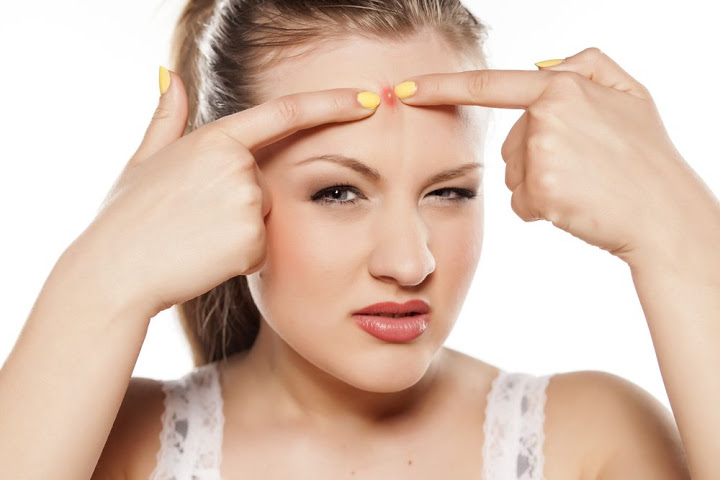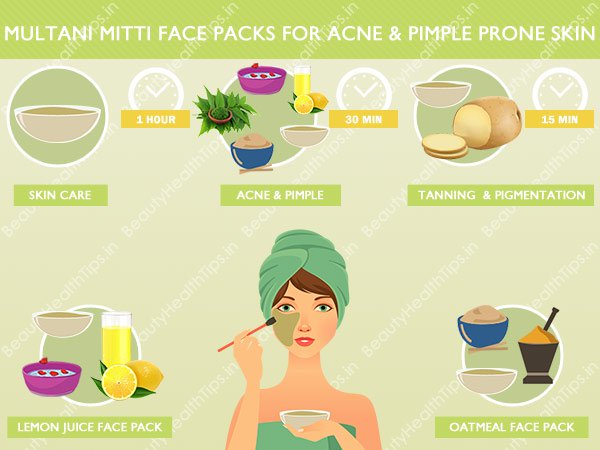Hydrogen Peroxide is a chemical and though it is an effective home remedy for treating acne and pimples, it is not free from side effects. Hence it is important to maintain the right caution if you are using it for treating pimples and acne. The best thing about Hydrogen Peroxide is, it actually works on any type of pimples and acne and can give you quick results.
Hydrogen peroxide works as a mild bleach, exfoliator as well as drying agent on the skin. It kills the bacteria causing the infection in the acne or pimple and thus gives relief from the condition. Being able to soak up the excess oil, it clears out the pores and hence the pimples dry out more quickly. However, even if this treatment can give you relief from acne and pimples much quickly, many dermatologists do not support the use of hydrogen peroxide on skin and if you have a sensitive skin, it is best to stay away from it.
The drying effect of hydrogen peroxide can be severe on the skin and may lead to other complications. Moreover, there are several good bacteria in our body and even on our skin, and they play a key role in promoting a healthy skin. When you use hydrogen peroxide, all the bacteria in the area of application are killed, which might not be suitable and can lead to other skin complications. Hence, if you are planning to use hydrogen peroxide particularly on your facial skin, which is more sensitive, make it a point to consult your doctor first.
Hydrogen peroxide for acne and pimples
When you are using hydrogen peroxide on your face, you always have to use it as a spot application, even if you are treating acne. The use of hydrogen peroxide for pimples is more simple because in this case you can easily dab the hydrogen peroxide solution directly on the pimple, but for acne, you have to apply the solution particularly onto the reddened, pus filled zits, avoiding the surrounding area of the skin. The drying effect of hydrogen peroxide might harm the skin and hence applying it only to a minimum area of the skin is always best. Here is how you should use it safely on the facial skin for treating acne and pimples,
Wash your face with a mild cleanser
The process should start with cleaning your face properly with the help of a mild skin cleanser. Wet your face with water and then massage the skin lightly with the cleanser, focusing on the affected area and then wash off with water.
It is best to use a cleanser that suits your skin. While washing your face, use your hands and not a brush or anything harsh which might inflame the already sensitive skin near the acne.
Steam your face
According to many who use this treatment regularly for treating pimples and acne breakouts, taking steam treatment before using the hydrogen peroxide can enhance the effectiveness of it in curing the acne or pimples quickly.
The steam opens up the skin pores, and hence it becomes much easier for the hydrogen peroxide to get into the pores and to kill the infection causing bacteria.
However, this might not be suitable for sensitive skin. Hence, when you are using hydrogen peroxide for the first time, it is best to not to opt for the steaming first.
If the peroxide seems to go well on your skin, you can opt for taking steam before application of the hydrogen peroxide to increase its effectiveness.
To take the steam, boil sufficient water in an open pan and then remove it from the heat. Now cover your head along with the container with a towel and take the steam for 10 minutes at least, maintaining the right distance from the water container. After you have taken the steam, do not pat your face dry. Let it get dry naturally, which will not take more than 5 minutes.
Apply the hydrogen peroxide
Before you apply the hydrogen peroxide onto the acne and pimples, make sure that it has the right 3% concentration. There is no harm if the concentration is just a bit less than 3%, but under any circumstances you should not use more than 3% hydrogen peroxide on your skin without the suggestions of a dermatologist.
It is best to apply the hydrogen peroxide solution onto the acne and pimples with the help of a cotton swab as that will ensure a perfect spot application. So, soak a cotton swab in the hydrogen peroxide solution and then apply it onto the pimples and zits.
Do not cover the whole area of the acne. Once the application is done, let it get absorbed into the skin naturally. Do not try to rub it in, also no need to wash off with water.
Apply an oil free moisturizer
Once the hydrogen peroxide has been absorbed by the skin, which will take not more than 2-3 minutes, you should apply an oil free light moisturizer in order to balance any dryness caused due to the hydrogen peroxide.
However, make sure that the moisturizer is really light and it does not leave a sticky residue or film on the skin, which can work as a trigger for acne and pimples.
The application frequency
While applying the hydrogen peroxide in the right way is important to get the best effects in curing pimples and acne, it is also important to get the right frequency of use to minimize the side effects.
You should not use 3% hydrogen peroxide solution on your face for more than once in 24 hours. You should use it daily at a particular time to get the best results.
Using it just before going out of home is not a good option. Hydrogen peroxide can increase the sensitivity of your skin and the sunlight might harm your skin more when the hydrogen peroxide is on. So, it is best to take the treatment at night or during the evening.
Using hydrogen peroxide creams
If you are using a hydrogen peroxide cream that your doctor has suggested for treating acne and pimples, make sure that you use it exactly according to the prescription, without deviating from it in anyway. Using these creams more or less than suggested can make it ineffective to treat the condition or can exaggerate the side effects. So, always follow the prescription accurately.
In case you are using a hydrogen peroxide cream, even without a prescription, which is not usually suggested, make it a point to read through the usage details and other precautions mentioned in the cream package before you start using it. Also, maintain all the instructions written on the package of the cream accurately to get the best results while minimizing the side effects.
Note
When you are using hydrogen peroxide for treating few pimples on your face, opting for steaming your whole face might not be needed. In such cases, it is best to dab the pimple with a thick towel soaked in warm water first, before applying the hydrogen peroxide. This will enable you to apply the heat onto the affected spot only.
You can also use this process in case of acne, if that covers a minimum part of your face. Steaming is good for clearing out the pores, but once you steam your face, you have to make sure that the pores are closed again otherwise the germs and dirt will get into them more easily. Moreover, steaming with water vapor can also cause skin dryness. So, use it in the right way to get the best results for minimum side effects.





